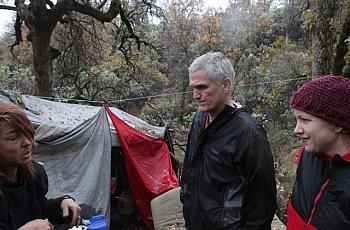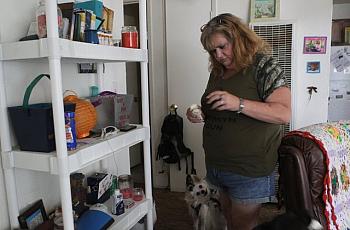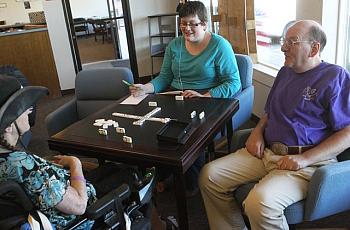
Alayna Shulman
Healthcare reporter

Healthcare reporter

In reporting her series on mental illness in Shasta County, Alayna Shulman didn't find the data she was hoping for. Instead, she highlighted that lack of data in her story. It was one of several lessons she took away from working on the project.

“Every day is stressful out here," says 49-year-old Kim Stanley, who is homeless and suffers from mental illness. "You’re tired; you’re exhausted ... and when people treat you badly for no reason, you’re crushed; you’re overwhelmed and crushed.”

If anyone knows how mental illness can land someone in the criminal justice system, it’s Dianna Branch, the mother of a severely mentally ill adult son. She says his illness — and the drug use he believes eases his symptoms — has caused him to start fights, total seven cars and vandalize property.

At the Restoration Center in San Antonio, officers are trained to de-escalate people so they can get the help they need and stay out of trouble. The center provides detox, sobering and mental health crisis intervention, and minor medical emergency services to about 25,000 people a year.

As part of its Fragments of Care series on mental illness, Redding's Record Searchlight asked various North State leaders and officials what they think needs to be done to improve mental health services in the area.

Reporter Alayna Shulman profiles two women living with mental illness in rural northeast California, where services can be scarce. “You’ve just got to keep going, and you’ve just got to cling to the hope that things are going to get better," one woman says.

The roster of mental health workers in the rural areas is alarmingly small. And with too many people seeking help and few professionals to offer it, experts say the results are predictable: lengthy wait times, fragmented care and — in some cases — patients giving up hope of finding treatment.

With high rates of many mental illnesses and not much money to treat them, are the rural counties of far-northern California destined for meager mental health services? What's lacking in these systems, and - perhaps more importantly - how did ones in similar areas overcome the same problems?